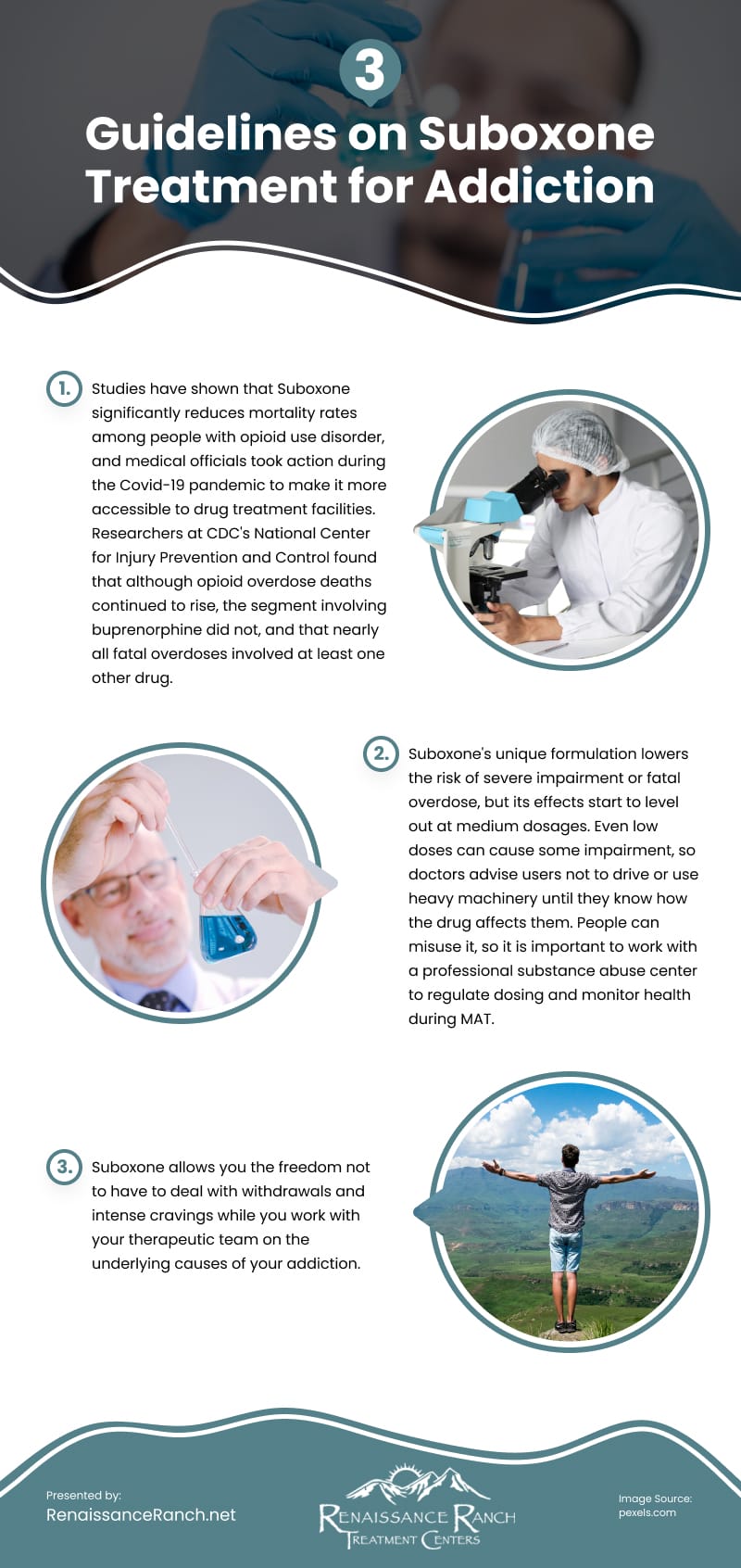
The first and probably most important thing you need to know about Suboxone is that it saves lives. That said, the second thing to understand is that Suboxone is not a cure for opioid addiction, namely in that it is, itself, an opioid.
Suboxone, a crucial medication for opioid addiction, combines buprenorphine (a partial agonist) and naloxone (an antagonist). It’s part of medication-assisted treatment (MAT) alongside methadone and naltrexone, used in rehab to aid detox and control cravings for opioids like oxycodone and heroin. Naloxone, also known as Narcan, within Suboxone, blocks opioid effects and induces withdrawal, serving as an emergency treatment for opioid overdose.
Together, this drug combination helps users come off stronger opioids to meet the immediate needs of their body’s dependence, thereby lessening the severity of withdrawal symptoms. Over time, suboxone treatment also curbs cravings, allows for better sleep and improves mental health. Depending on your addiction and its severity, you could use Suboxone for a short time or need extended treatment.
But isn’t using suboxone trading one addiction for another? No, and here are some reasons why:
Studies indicate that Suboxone significantly reduces mortality rates among people with opioid use disorder, in many cases by half. In light of this knowledge, medical officials took action during the Covid-19 pandemic to make buprenorphine more accessible to drug treatment facilities.
Researchers at CDC’s National Center for Injury Prevention and Control then studied whether these actions lead to increased buprenorphine overdose deaths. The study found that although opioid overdose deaths continued to rise, the segment involving buprenorphine did not. Furthermore, it showed that nearly all fatal overdoses of buprenorphine involved at least one other drug.
Suboxone’s unique formulation lowers the risk of severe impairment or fatal overdose. Buprenorphine’s effects start to level out at medium dosages. This ‘ceiling effect’ prevents patients from taking higher amounts of the drug for more significant results. However, as even low doses can cause some impairment, doctors advise suboxone users not to drive or use heavy machinery until they know how the drug affects them.
Suboxone addresses a disease – addiction – and those using it should be treated like any other person with a medical condition that’s beyond their control. Of course, Suboxone remains a powerful drug. People can and do misuse it, most often by mixing it with alcohol or other medications. You must work with a professional substance abuse center to regulate dosing and monitor your health during MAT.
You can live a relatively normal life with Suboxone. That’s not possible if you have a heroin or morphine addiction. Suboxone allows you the freedom not to have to deal with withdrawals and intense cravings while you work with your therapeutic team on the underlying causes of your addiction. Most of the time, you can also return to your job while using this medication. There might be some exceptions where Suboxone use disqualifies you from work, such as in long-distance driving professions and law enforcement. Generally, though, the Americans with Disabilities Act protects workers who use medication-assisted treatment from employment discrimination.
source: https://renaissanceranch.net/suboxone-treatment-101-treating-opiate-abuse/
Comments
Download this infographic.
